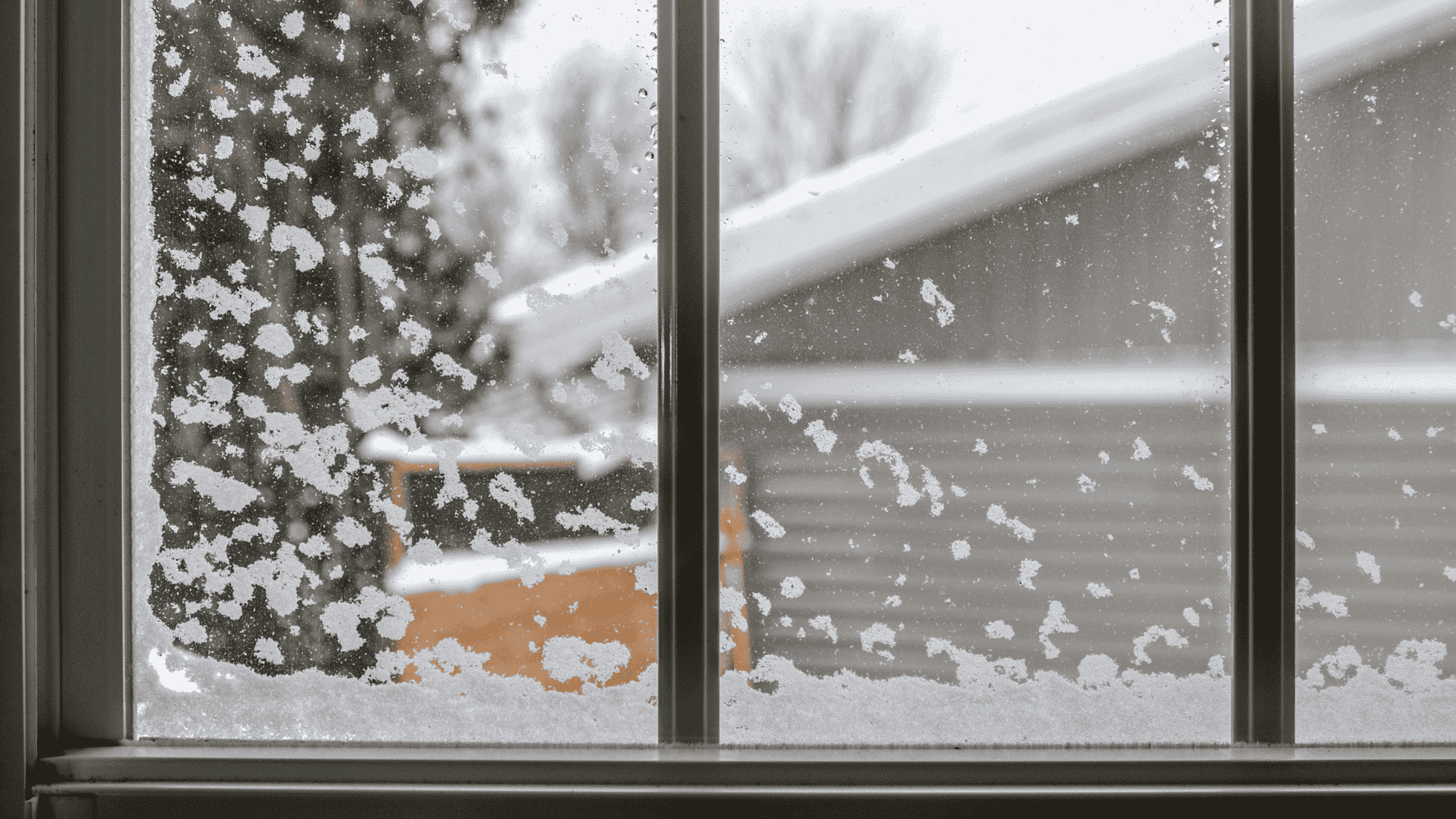
DIY-Double Glazing: How to Double Glaze Windows Cheaply
Energy efficiency is a major buzzword when it comes to both household costs and home improvement. And for good reason. Saving energy is not only an obvious way for individual people to fight climate change, it can also have a notable financial impact when you save money on your energy bills.
For old, cold houses, the list of steps you can take to improve the energy efficiency (and comfort) of your home is extensive. Unfortunately though, they usually involve a significant upfront cost for what can be a seriously long term gain.
This can strike them off the options list for most people, particularly for those that live in listed buildings or renters who don’t want to spend money they’ll never see returned.
But there is still one budget-friendly option available. A cost-effective, quick and semi-permanent way of adding extra insulation to improve the thermal performance of older houses with single-glazed windows or double-glazed windows that are no longer at their best. And you don’t need a whole lot of DIY skills, either!
Window film insulation. It’s a simple, cheap way to create DIY secondary glazing and help with insulating draughty windows and exterior doors.
How does window film insulation work?
Window film is a thin membrane of plastic that you can attach to the inside of your window frame. When you fit the film, a small pocket of air is trapped between the glass and the film, creating an extra layer of insulation, like you would between the two panes of glass in double glazed windows.
This layer helps keep the heat of the house in, and the chill of cold air out.
Window film isn’t the only step you can take to add extra insulation to old single pane windows. If you notice any draughts coming in around the edge of the frame, you can also attach window insulation tape. This is a padded, foam-like tape that will absorb stray gusts that squeeze through between the glass and the frame.
Not only does it minimise the chill caused by cold air getting in, it also reduces the amount of warm air that can escape as well.

Does window insulation film work in both winter and summer?
Yes it does! Window insulation film can be effective in both winter and summer. As mentioned, in winter, it reduces heat loss by acting like secondary glazing panels that create an extra barrier on windows – helping to keep rooms warmer and lowering heating costs.
In summer, it can block some heat from the sun entering your home, keeping interiors cooler and reducing the need for air conditioning. Tinted and reflective films are especially useful on windows that get a lot of direct sunlight.
This dual benefit means you can maintain a comfortable indoor temperature year-round.
How long does insulated window film typically last?
Insulated window film typically lasts between 3 to 5 years, depending on the quality of the film, exposure to sunlight and how well it was installed.
While it’s unlikely to compare to actual secondary double glazing, high-quality films installed carefully on clean surfaces can sometimes extend beyond five years, especially in mild climates with less UV exposure.
Over time, however, even durable films may begin to lose adhesion, clarity or insulation efficiency, especially in high-use windows exposed to direct sunlight, at which point it may be time to seriously consider new windows.
Can window film insulation be applied to all types of windows?
Yes, insulating film can be applied to most window styles, regardless of window shape. From old wooden sash windows with single glazing through to modern double glazed uPVC windows that might not be performing as well as they should, insulating film can work if installed correctly.
However, it may not adhere well to textured or frosted glass, and some window manufacturers may discourage you from applying film to double glazed units as it can affect thermal efficiency and even void warranties.
It’s important to check the compatibility of your existing windows and film specifications before fitting secondary glazing to make sure installation is effective without the potential to cause damage. If your windows are still under warranty, it’s advisable to get some sort of confirmation from the manufacturer too.

How To Install Window Film Insulation
Installing window film insulation is a surprisingly straightforward job that can make a huge difference, and calls for minimal tools and no specialist skills or know-how.
When you buy a pre-packed double glazing kit, fitting instructions will be supplied and it will already come with double-sided tape for attaching the film. So, all you need to find is a handful of everyday household items to help you install it.
What you’ll need to install window film insulation:
- A cloth
- A pair of scissors
- A spoon
- A hairdryer
Step One: Clean Your Window
Clean the whole of the window unit using warm soapy water and thoroughly dry with a clean cloth. This is a really important first step as any dirt on the window glass will get caught under the film. As well as making your windows look permanently grimy, this will also affect the staying power of any tape you use.
Step Two: Measure Your Window Frame
Be as precise as you can. Firstly because you don’t want to waste any film, specific measurements will also make it far easier to fit when it’s the correct size.
Step Three: Cut Your Film to The Correct Size
Measure it before you cut and add an inch to your measurement. This should be enough to allow for the depth of the window frame, without making it too unwieldy.
Step Four: Put a Track of Double-Sided Tape Around the Frame
Once the tape is up, it’s best to leave it for a little bit to ‘settle’.
Step Five: Peel the Backing off the Tape
Try to be careful, and don’t tear or remove any of the tape as this will affect the quality (And thus the efficiency) of the seal you create.
Step Six: Apply the Film to the Window
Take extra care at this stage as you need it to be as smooth and clean as possible to make sure you get the best results.
Step Seven: Run a Spoon Over Your Seal
Okay, it doesn’t have to be a spoon, although that is the perfect everyday household item for smoothing out a secure, consistent seal around the outside of the film.
Step Eight: Trim Off Any Extra Film Around the Frame
Anything that sits on the wrong side of the tape is good to go, just to neaten the edges.
Step Nine: Run a Hairdryer Over the Film
This will create the seal, and help eliminate any unsightly wrinkles.
It is genuinely that simple to add an extra layer of insulation and heat protection to your home!

Does window insulation film stop condensation?
As well as providing cheap insulation for your windows, the film can also help with condensation problems too.
Condensation can be a massive problem in homes without double glazed windows. It happens when warm air hits cold glass: the rapid cooling makes water droplets form. It relies on major factors:
- Excess moisture in the air created by inescapable activities like washing up, drying clothes and shower
- Lack of proper ventilation, trapping that moisture in the house
Condensation can create the perfect breeding conditions for mould spores, which can ultimately lead to rotting windows and even severe health problems, so it’s important to keep it to a minimum.
Opening your windows can be enough to combat condensation because this will allow the moisture in the air to escape. But no one wants their windows open in the depths of winter, when weather-chilled panes of glass make this problem prevalent.
An extractor fan might be an option, but installing one does take some level of DIY knowhow, so if you’re not comfortable doing it yourself, the professional installation costs can soon add up.
Luckily, window insulation film can also help tackle this issue. The thin insulating membrane of plastic stops the air meeting the glass in your existing windows directly, so the droplets of condensation don’t form.

Benefits of Window Film Insulation
Condensation prevention isn’t the only benefit. Insulating window film offers several key benefits.
As we’ve mentioned already, it helps reduce heat loss in winter and minimises heat gain in summer, making your home more energy-efficient and reducing heating and cooling costs. By blocking draughts, it also creates a more comfortable indoor environment.
Here are some more reasons you may want to consider this technique:
UV Protection
The film can also protect furniture and flooring by filtering out UV rays that cause fading. Additionally, some films add privacy and reduce glare, making it easier to enjoy natural light without discomfort.
It’s Cheap
Double glazing is a very expensive endeavour. Between the cost of glass, frames and labour to install the windows it can easily run into the tens of thousands, even for small houses without many windows.
A window film kit should set you back approximately £40, and can provide up to 90% extra insulation than a single pane window without secondary glazing panels.
It’s Straightforward to Install
As you can see from the instructions above, installing this film is simple and quick. You could easily reattach it for every cold spell, without too much fuss or cost.
Fantastic for Renters
No one wants to sink thousands of pounds into a property they don’t own. Few people want to shiver their way through winter, or blow all their money on heating bills either. Window film is quick, cheap and easy to remove making it a perfect temporary solution for tenants who are sick of astronomical heating bills.

Downsides of Insulating Window Film
While window film insulation is definitely effective, it does have some potential downsides and may not always be the perfect solution to your heating loss woes. There are drawbacks to the method and it’s up to you to weigh them up.
First, it can slightly reduce visible light, giving windows a slightly tinted appearance (unless this is something you’re consciously going for, in which case it’s a win!)
As mentioned, for double glazed windows, applying insulation film might cause overheating between panes, potentially voiding warranties. Additionally, improper installation can lead to bubbling or peeling, which reduces effectiveness and appearance.
Insulation film also isn’t a permanent solution. Over time, it may need to be replaced as it loses effectiveness.
Here are a few other things to consider:
It’s Not as Effective as Quality Double or Triple-Glazed Windows
Replacing the windows of a typical detached house could help you save approximately £150 a year on energy and reduce carbon production by almost 450kg. As well as improving heat retention, double glazed windows and doors can also help reduce noise pollution in your home.
It’s Not Exactly Attractive
Probably the main drawback of window film is its appearance. However carefully, cleverly attached the film is, it will still be visible and will add an unpleasant textured effect to your otherwise crystal clear glass.
Windows Can’t Be Opened While the Film is Attached
The tape holding the film is fixed on the frame, across the whole window. This means that you can’t move or open individual panes or parts of the window while the film is attached.
DIY Double Glazing on a Budget
Window film is not the only step you can take to add extra insulation to your home, nor is it the most effective. But it can help save money, it’s easy to install and it will make a difference.
If you’re struggling with heating costs or you find you just can’t keep your home warm in winter as you’d like, an additional layer of insulating window film may be just what you need. Likewise, if you’re not in the position financially to invest in replacing your existing windows or to introduce secondary glazing systems, this cheap and cheerful DIY double-glazing method is definitely one to consider.











